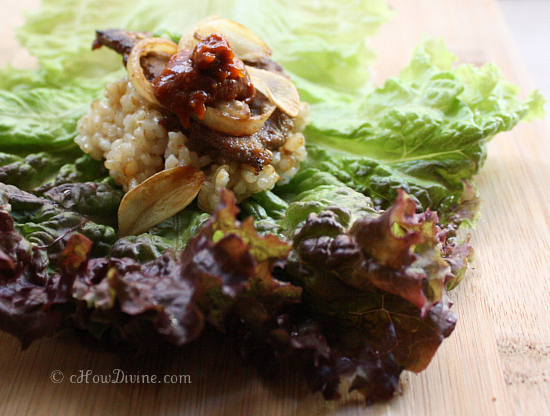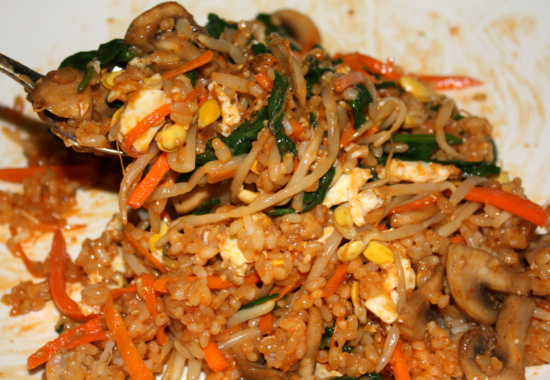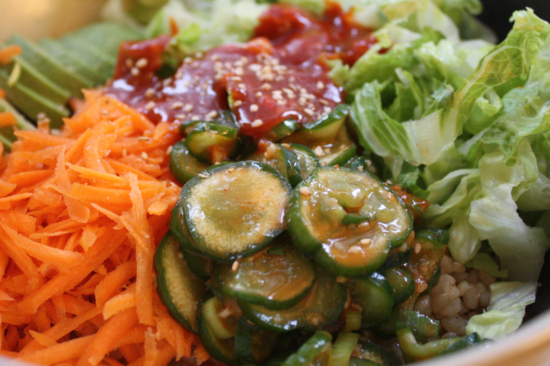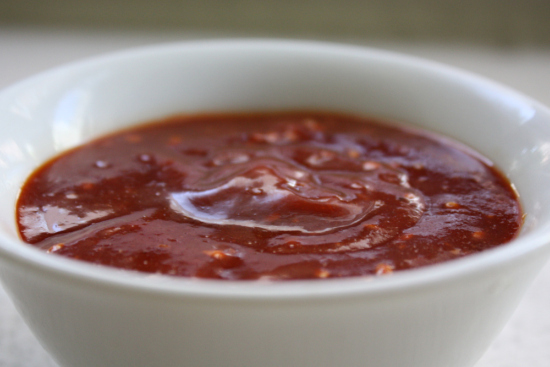Ssamjang directly translates to wrap sauce or wrap paste in Korean – “ssam” means wrap and “jang” means sauce or paste. Just as the name suggests, it’s a condiment commonly used when assembling Korean wraps. It is usually made with gochujang (Korean chili pepper paste) and doenjang (Korean soybean paste) as its base. But there are no rules when it comes to ssamjang. You can add anything to your heart’s desire. I’ve seen it made with lots of garlic, cooked minced meat, chopped sautéed mushrooms, crushed tofu, and so on. You can go wild. Really.
I had some marinated bulgogi in the refrigerator. And I was really craving some ssam (Korean lettuce wrap). I could have had it with gochujang sauce, but I wanted something different – a new treat for my palate. I decided to make some ssamjang.
I love garlic, roasted or sautéed/grilled garlic in particular. So I decided to make the ssamjang with some sesame oil-sautéed minced garlic. And I upped the garlic quotient by sautéing some sliced garlic for additional topping for my ssam. The result? Sublime…
Continue Reading Ssamjang (Gochujang-Doenjang Sauce for Wraps) . . .






